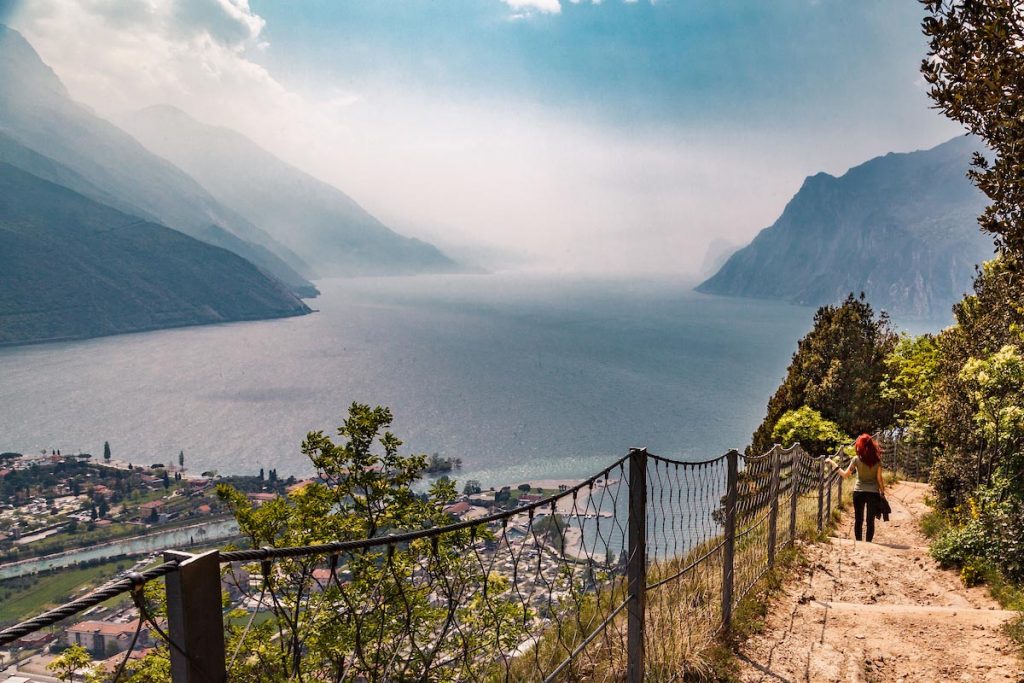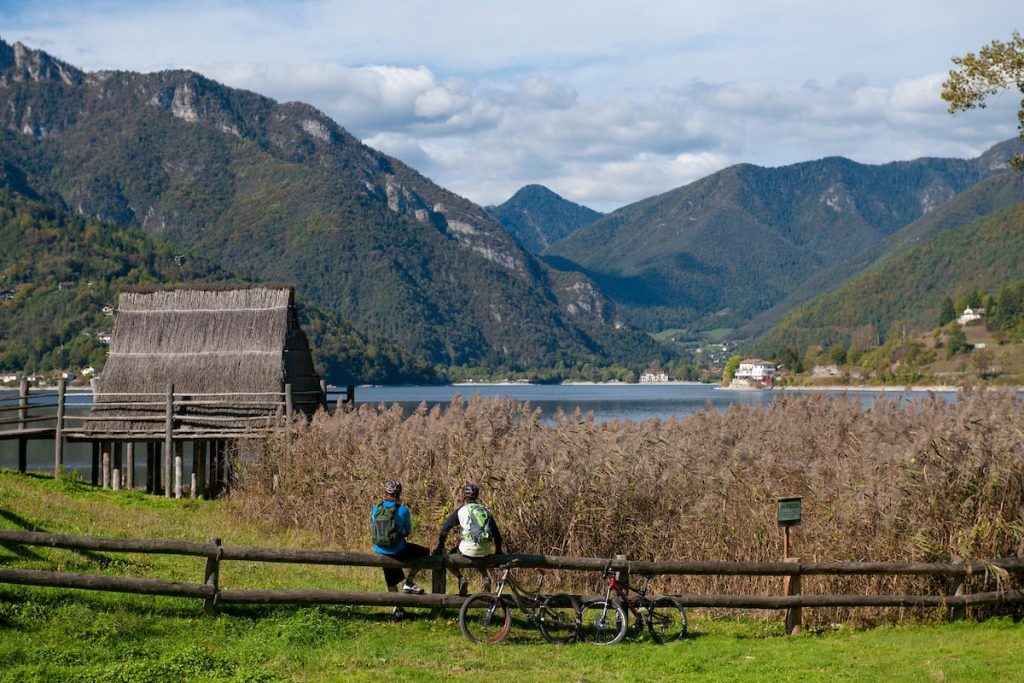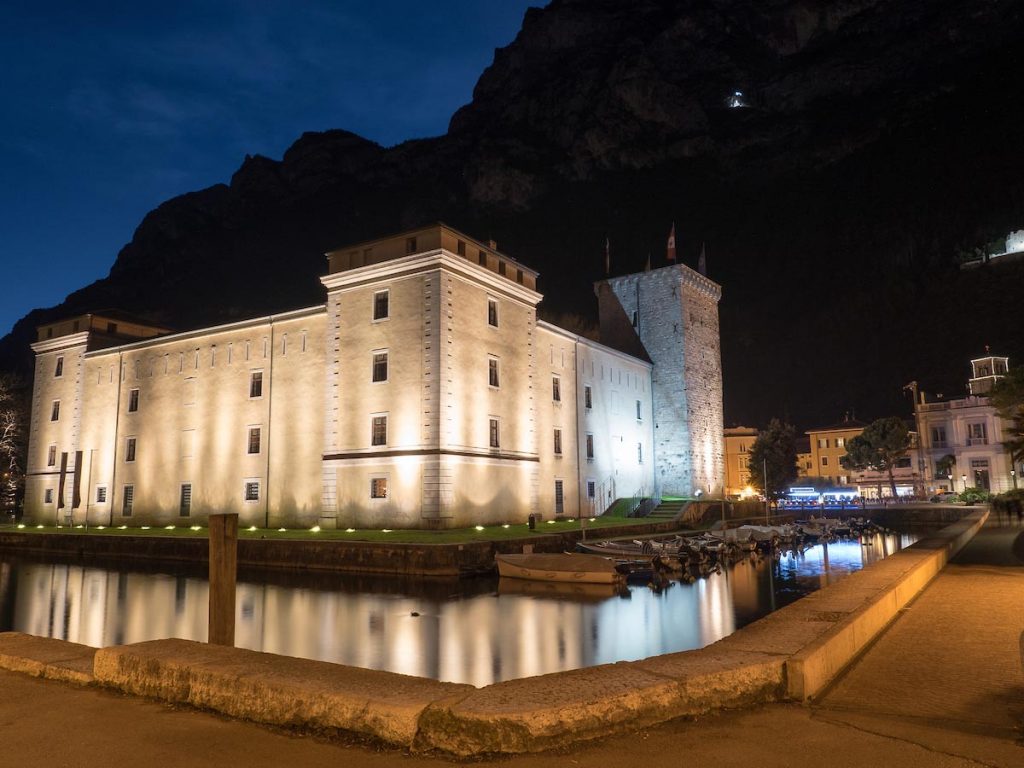Historical itineraries that retrace past eras among remote fortresses, castles, towers guarding the territory and ancient villages.
A journey back in time, to past eras that plunge into today’s history. Visiting Lake Garda Trentino through its many beautiful landscapes, both natural and archaeological, is a precious opportunity.
Archaeology has always been a bridge between cultures, an instrument of intercultural dialogue. What better occasion to “dialogue” through time than a journey to discover the archaeological beauties of a territory.
Let’s see which are the most interesting of Garda Trentino.
- Fossils of Monte Brione. In addition to being one of the most popular routes, Monte Brione offers a wonderful direct contact with history. In fact, there are numerous petrified reperts of marine organisms. The limestone rocks that make up Brione were formed on the bottom of the sea that occupied this whole area, which is why it is easy to find fossils and other fossilized findings.

- Roman baths of Riva del Garda. The excavations, conducted during 2007, have brought to light interesting traces of the Roman age of the second half of the first century AD, in which the public baths have been recognized. The areas where the Romans used to relax and exploit the wonders of the thermal waters are very clear – a courtyard, in the middle of which there was a large quadrangular pool and probably a portico paved with pink limestone slabs. Then the dressing room, a small latrine, a cold room (frigidarium), a warm room (tepidarium), the sauna (laconicum) and the hot bath (calidarium). Very interesting is a visit to these remains, among other things, in the centre of the town and freely visible when passing through Viale Roma just near the Terme Romane car park.
- Castel Penede. A ruin and nothing more for in-expert eyes. Yet these remains – freely visible without any entrance – are today a splendid proof of a glorious past. Built by the Lords of Arco in the late Middle Ages, around 1200, today the Castle is a ruin that evokes ancient suggestions, narrated even by the Supreme Poet Dante, who admired the Lake Garda and then described this feeling in a triplet of the Purgatory of his Divine Comedy.
- St. Andrew’s Island. A real open-air museum, these excavations have brought to light numerous finds that tell the story of this island and its inhabitants. The remains can be admired in the nature reserve of Loppio, along the road that leads to Garda Trentino coming from Rovereto. Also interesting as an archeotrekking excursion, here were found traces of the walls that defended the town with several buildings inside occupied for about 200 years, between the sixth and eighth centuries. On the top are the remains of a church dedicated to St. Andrew, the fishing apostle, from whom the island took its name.
- Archaeological site of Monte San Martino. On Monte San Martino, at the foot of which are situated the villages of Pranzo (Tenno) and Campi (Riva del Garda), one of the most important archaeological areas in Trentino has been brought to light. The site has highlighted a large and important sanctuary dating back to the Roman age between the first century B.C. and the third century A.C. All confirmed by the discovery of various materials such as pottery or sealed earthenware, amphorae, oil lamps, coins of various types and daily work tools. You will find an archeotrekking route that is not only rich in historical evidence but also in fascinating legends such as the one according to which there is a small boulder that shows the cast left in the seat by St. Joseph, the Madonna and Child Jesus, during his flight to Egypt.
- Lake Ledro stilts. It is impossible not to mention in the nearby Valle di Ledro, the precious testimony of the archaeological area, which dates back to about 4,000 years ago, and the Lake Ledro Pile Dwellings Museum (link). In 2012 the archaeological area of Ledro was proclaimed a UNESCO World Heritage Site. The village, completely rebuilt, and in the museum, completely renovated, you can immerse yourself in the Bronze Age by observing perfectly preserved finds and tools of that period.

How not to remind visitors to Garda Trentino, a precious opportunity to admire finds of extraordinary importance. Directly on the waters of Lake Garda, in fact, we find the MAG Museo Alta Garda located in the splendid Rocca di Riva which, together with the Galleria Civica G. Segantini, located in the seventeenth-century Palazzo dei Panni in Arco, contain in their rooms fragments of history, archaeology and art of great value.
In the section dedicated to the Archaeology of the MAG there are the famous stele statues, precious finds of international importance dating back to the Copper Age. These sculptures carved in stone, which represent human-looking figures, have been widespread since the last centuries of the 4th millennium B.C. and today, thanks to careful restoration work, they are preserved and visible in one of the most interesting museums in Trentino.

A journey through the history of Garda Trentino is an experience not to be missed in this place. Discover more about its hidden meanders, its history. The past more alive than ever belongs to those who live it with interest and love of discovery.










